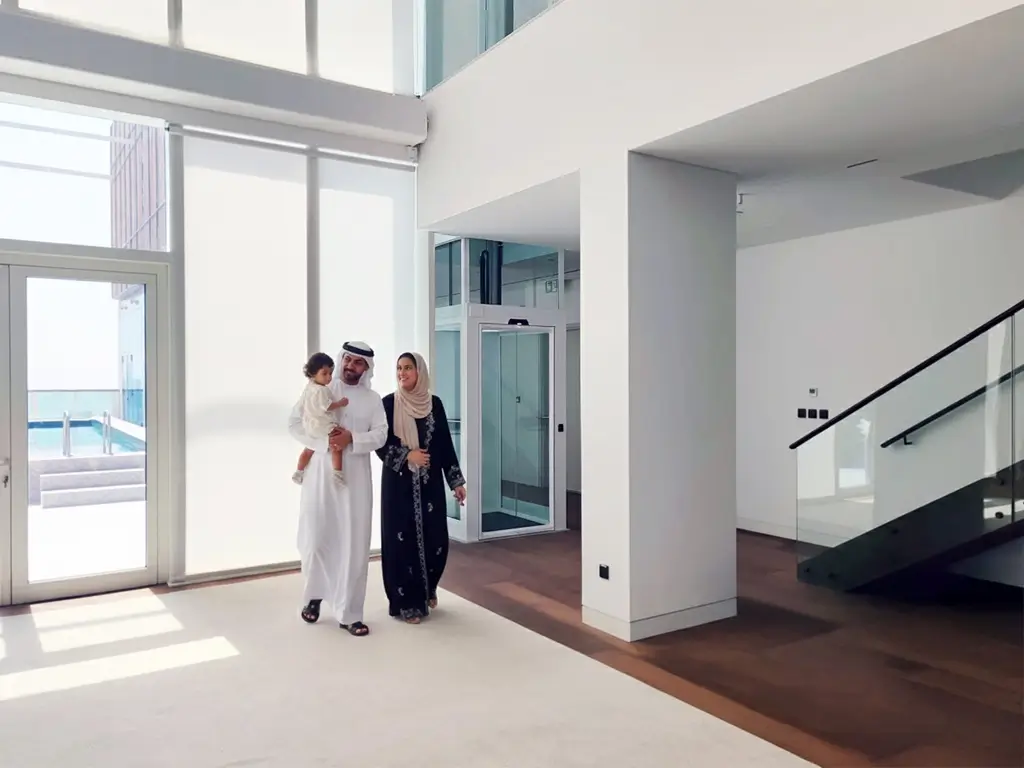TL;DR: Install home lifts in Dubai to age in place without moving, support recovery or long-term health needs at home, and cut the daily strain of stairs. Restoring independence, making every floor usable, and easing multi-level routines for busy families.
Go to any home improvement store and there are limitless choices for renovation, high-end faucets, high-end thermostats, improved flooring. Question homeowners who installed an elevator why they installed it, and their answers will be surprisingly the same, none which pertain to grandstanding.
As a matter of logic, individuals would think that houses receive elevator installations because their owners desire that luxury manor atmosphere or because they themselves happen to be persons who do not think about budget limitations. Wake-up call, most families who do this are responding to some very concrete, very practical questions that have to do with their daily living.
Reason #1: Aging in Place (The ONE We All Fear)
This is the big problem, honest to goodness, this is why most home elevator decisions are made. Folks want homes that they love, but the ultimate arch-nemesis is the stair.
Put yourself in the Hussains (all too real-world, entirely fictional scenario): they bought their dream two-story house 20 years back. Then, no problem with the stairs. Today? Father’s knees are gone after years as a weekend warrior sportsman, Mother is dealing with arthritis, and those beautiful hardwood staircases they once loved are Mount Everest come evening.
They don’t want to compromise or move to another retirement community. This neighborhood cannot be surpassed, the grandchildren are nearby, they’ve had twenty years of history here in this house. But the physical considerations about the stairway make the situation untenable.
It would still keep them within the home they adore without the daily stress. It would still be the second story master bedroom, fully finished basement that is utilized daily, and they are not confined on the same level as their own residence.
It is surprising that most families invest in lifts before they are urgently needed. They think ahead, appreciating that it becomes more difficult if they wait until accessibility hits crisis point. Clever idea, as that seems.
It’s also the multi-generational factor that comes into consideration. It doesn’t necessarily have to be the owners themselves, it could be old parents who are moving. It gives the parents their own rooms upstairs but still provides safety and independence. Nobody compromises anyone else’s privacy, and the entire family gets the entire house.
Reason #2: Medical Problems during Rehabilitation (The Taboo Topic People Don't Talk About Enough)
Life takes some sharp turns. Injuries happen, surgeries are required, chronic cases arise. Then, those stairs become seemingly impassable obstacles, no longer mere nuisances.
Take the Ali family (again, a very typical situation that we’ve all too often had the misfortune to deal with): Dad blows out his ACL kicking the kids around during soccer. Surgery is OK, but rehab requires six months of restricted movement. It’s their second-story bedroom. They use the family room, the kitchen, all the amenities that they do daily on two floors.
Without the lift, they would be assembling a temporary bedroom downstairs, hauling it all downstairs, and pretty much throwing their entire house into chaos for half a year. With the lift? Rehab occurs back home, literally, back within their own actual bedroom, and family life pretty much goes back to normal.
Every once in a while, it is not temporary. Long-term issues such as MS, arthritis, or heart issues can make the stairs extremely hazardous. Families who are confronted with this option are left with a decision to make: significantly re-design their house around single-level living, relocate to a different house, or construct an elevator that will suit their existing house.
It also has the greatest psychological impact. Stairs as obstacles cause people to feel trapped even in their own homes. Sections of the house are off-limits. That lovely upstairs guest room is unused because guests will be unable to climb up. That upstairs home office is no longer productive.
Most lifts restore normality and independence. That, in effect, must mean that the medical obstacles need not predominate the lifestyle within their own homes that families lead.

Reason #3: Daily Convenience (Surprise of All)
This is why they are so surprised: so many houses already have lifts because they’ve had enough of the daily strain of the stairs, even if they’re all fit and active.
Consider that you literally live in a multi-level home. You’re constantly schlepping up and down the steps, laundry baskets, groceries, cleaning supplies, packages, baggage. It’s a wee little cardio workout that you didn’t account for.
The Khoury family (theoretical but utterly familiar) has three kids, two dogs, and high-pressure careers. It is their daily routine that takes them up the stairs, up and down the stairs, time after time,-load-ed down with backpacks, athletic gear, foodstuffs, and all the other appendages to family living. By evening, they’re all exhausted, half their energy used up just to navigate their own house.
It wasn’t the issue being immobile or that they were aging, it was that everyday living wasn’t as physically demanding. Now the groceries only get hauled up once. Clothing gets transferred around without the drama. Even the kids get to tote their own personal items around without making a fuss about the stairway.
This convenience factor extends even to home functionality. That basement becomes a genuinely usable room instead of the floor that everyone avoids because there are stairs. That top floor office gets used daily instead of being stored because it’s “too high” to be used daily.
Working from home has compounded this. When you are running up and downstairs multiple times a day for coffee, bathroom breaks, or meetings in other rooms, stairs are very frustrating. A lift, on the other hand, makes multi-level living even manageable for working-from-home lifestyles.
Notice anything the three motives have in common as their aim? It doesn’t involve making high-style statements or impressing the neighbors, but getting houses to function best daily.
Whether it’s future-proofing as we get older, living with medical realities, or just making daily commutes less stressful, domestic lifts address real-world problems. Nice to dream about luxury, that’s why most families invest. Need a guide in choosing the best home elevator? Check the ultimate guide.


